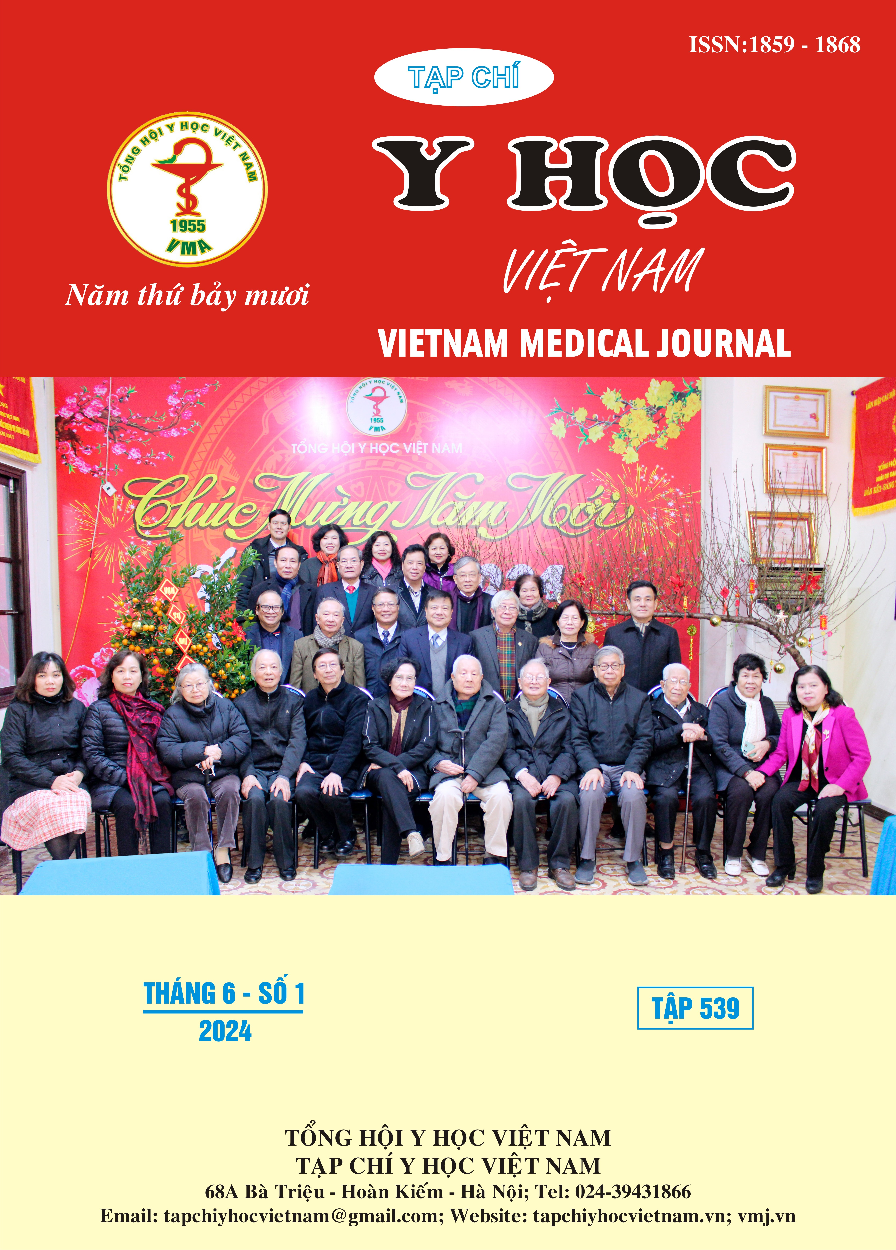THE FEATURES OF ACUTE POISONING CHILDREN FROM EMERGENCY DEPARTMENT – CHILDREN’S HOSPITAL 2 FROM 01/06/2013 TO 01/06/2023
Main Article Content
Abstract
Objectives: to describe the features of acute poisoning children from emergency department – children’s hospital 2 from 01/06/2013 to 01/06/2023. Methods: Descriptive, case series study. Results: There were 479 children poisoned in our study, the male/female ratio is 1,5:1; the age of 5 was the most, mainly incidental, and most of them lived in provinces (72,9%). The number of patients who have symptoms of mucous skin or at the site of toxic exposure (66%). Hemorrhagic syndrome was the most common (44,2%). Multi-organ dysfunction included electrolyte abnormalities, hematological changes, liver and kidney injury, and muscle enzyme increase. Causes of poisoning were animal bites (62,4%), drugs and chemicals (17,5%), and food poisoning (2,5%). Food poisoning tended to increase (mushroom poisoning 33,3%, Botilium 25%, methemoglobin poisoning (25%)). The rate of first aid at home was low (14%), and the rate of incorrect first aid was high (56,7%). Treatment of the front-line hospital was wound cleaning (55,1%), gastric lavage, activated charcoal (21,8%), and antidotes using (4,7%). The time to detect poisoning was mainly under 1 hour (85,1%). The highest rate of emergency treatment at Children's Hospital 2 was respiratory emergency (7,1%). The rate of antidotes used was 44,5%. The rate of advanced method use was 5,8%. These antidotes were anti-snake venom serum (90,1%), N-Acetylcysteine (6,2%), Pralidoxime (1,9%), BAT (1,4%), Methylene blue (0,5%). Most cases of poisoning were cured (97,7%). Most of the mortality rates were chemical poisoning (63,6%). Conclusions: In our study, poisoning was mainly in males, under the age of 5, mainly incidental. The main cause was bites and stings, the rate of incorrect first aid was still high. Most mortality is chemical poisoning. It is necessary to promote food safety, control the use of chemicals, avoid bites at home and in surrounding areas, to have a proper first aid education program
Article Details
Keywords
: acute children poisoning, children’s hospital 2, emergency department
References
2. Phạm Lê Duy, Đoàn Thị Ngọc Diệp. Đặc điểm tai nạn trẻ em nhập khoa cấp cứu bệnh viện Nhi Đồng 2 năm 2010. Y Học TP Hồ Chí Minh. 2012;(16)(1):8-17.
3. Hoàng Trọng Hanh. Tình hình ngộ độc cấp ở Khoa Hồi sức Tích cực Bệnh viện Trung ương Huế/Hoàng Trọng Hanh. Tạp chí Y học lâm sàng – Bệnh viện Trung ương Huế. 2021;(70):79-85.
4. Nguyễn Tấn Hùng, Trương Thị Mai Hồng, Nguyễn Thị Thanh Thuý. Nguyên nhân và đặc điểm ngộ độc cấp trẻ em tại Bệnh viện Nhi Trung ương giai đoạn 2017-2020. Tạp chí Nghiên cứu và Thực hành Nhi khoa. 2021;5(1).
5. Đặng Thị Xuân, Đỗ Ngọc Sơn. Đặc điểm dịch tễ và các tác nhân gây ngộ độc cấp ở trẻ em tại trung tâm chống độc bệnh viện bạch mai. Tạp chí y học việt nam. 2021;501(2).
6. Saikia Diganta, Sharma RK, Janardhan Kole V. Clinical profile of poisoning due to various poisons in children of age 0–12 years. Journal of family medicine and primary care. 2020; 9(5):2291.
7. Lee Jung, Fan Nai-Chia, Yao Tsung-Chieh, et al. Clinical spectrum of acute poisoning in children admitted to the pediatric emergency department. Pediatrics & Neonatology. 2019;60(1):59-67.
8. Peden Margie, Oyegbite Kayode, Ozanne-Smith Joan, et al. Child injuries in context. World report on child injury prevention. World Health Organization; 2008.
9. Fernando Ravindra, Fernando Dulitha N. Childhood poisoning in Sri Lanka. The Indian Journal of Pediatrics. 1997;64:457-460.


